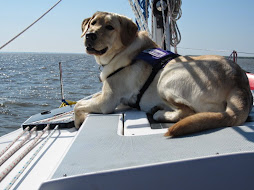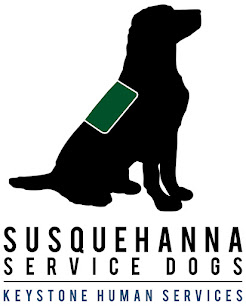*This
post may contain mild spoilers for the movie Jurassic World. But we promise
it’s nothing that will ruin the movie for you.
The Internet has been full of movie clips and memes of Chris
Pratt’s Jurassic World character Owen
wrangling four velociraptors. If you haven’t seen any of the trailers, you can
watch one here. The first 35 seconds show Owen interacting with the velociraptors.
The cool thing that you don’t see in the trailers, though,
is that Owen trained these dinosaurs using clicker training. That’s really
exciting! Clicker training is a positive reinforcement method of training where
a desired behavior is marked and rewarded. This type of training can play a
role in the bond between an animal and the trainer, creating “a relationship
based on respect” as Owen says in the movie.
All of our service dogs are trained using clicker training.
We start then when they’re very young. Our dogs go to puppy raisers when
they’re eight weeks old, and our raisers start by clicking and treating the
puppies just for making eye contact (“attention”). The pups learn that every
time they hear the click, they get a yummy treat, so of course they want to
repeat the behavior that caused the click.
The wonderful thing about clicker training is that it’s a
very clear form of communication. The click clearly marks a behavior, so the
dog knows exactly when they’re doing the right thing. The treat then rewards
them for it, so the dog is much more inclined to repeat the behavior and even
build on it. Using this method, we can easily train a dog to do more complex behaviors,
like turning on a light switch, picking up an item, or opening a door. Because
the dog is having fun and being rewarded, they often learn quickly.
Plus, the dogs love it! After a while, when our puppy
raisers don their clicker and treat pouch, the dogs come running!
Watch the video of SSD Aunt Laura learning how to “heel.”
Listen for the click. Revenda, her puppy raiser, clicks every time Laura moves
her back legs into the correct position at Revenda’s side. Notice that with
each click, Laura gets a treat.
Since this video was taken, Laura has mastered “heel”
(swinging into place on her handler’s left side) and “side” (swinging into
place at her handler’s right side). You can tell from the video that Laura is
enjoying herself. Her tail is wagging and she’s engaged with her raiser.
Now, we know that the clicker training portrayed in Jurassic World is a far cry from what it
should actually look like. But we understand that choices undoubtedly had to be
made for cinematic effect. We’re still
happy to see this positive training method get a few moments on the big screen.
So we want to know. What behaviors have you taught your
“velociraptor” using clicker training?













